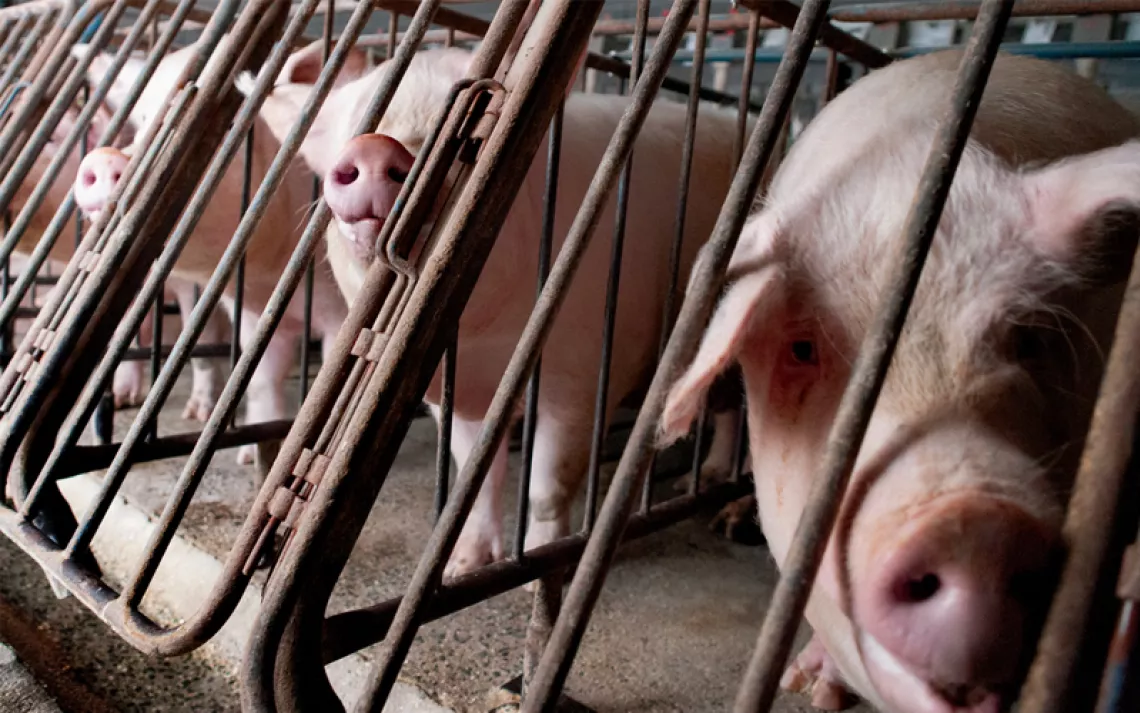Fast-Growing Fish, Herbicide-Resistant Lawns, and Genetically Engineered Trees
Advances in Biotech

Fast-growing Fish
Salmon, carp, trout, and tilapia that grow up to six times more rapidly than those in the wild are being developed for commercial production in America and China. If the U.S. Food and Drug Administration approves its proposal, Massachusetts-based Aqua Bounty Farms could begin marketing transgenic salmon eggs to fish farmers as early as 2002. Other scientists are using genetic engineering to create fish with increased cold tolerance and disease resistance, or even the ability to detect pollution.
The Promise: Fast-growing fish could replenish fisheries without depleting natural stocks and boost efforts to end world hunger. Researchers in Singapore are trying to develop fluorescent zebra fish (altered with jellyfish proteins) that would detect pollution by turning different colors depending on what substances--including hormones and heavy metals--are in the water.
The Peril: As with hatchery fish, genetically engineered fish that are accidentally released into the environment could disrupt natural ecosystems. (Accidental release is common because of storms and damaged holding pens. No law requires breeders of transgenic fish to keep them from escaping into local waters.) Fast-growing transgenic fish might out-compete native species for food, for example, yet produce young that are ill-equipped to survive. Aqua Bounty plans to make its fish infertile, but current sterility methods are not entirely effective. Even if they were, this would create other problems: As with “Terminator” technology in plants, farmers would not be able to breed their own fish, making them reliant on suppliers of transgenic eggs.
To Learn More: Information about transgenic aquaculture is available from the FDA and from Environmental Defense.
Herbicide-resistant Lawns
The Scotts Company, an Ohio-based lawn-care supplier, is developing a “low mow” grass that grows half as fast as normal and a strain of herbicide-resistant Roundup Ready bent grass for golf greens; the latter could be on the market as early as 2003.
The Promise: Slow-growing grass would require less cutting, a plus for many homeowners and groundskeepers that could also reduce emissions from lawnmowers. Grass that’s resistant to weed-killers could be doused with herbicides without suffering harm.
The Peril: Creeping bent grass from golf courses already invades many lawns and gardens; making it resistant to sprays would only make it harder to control. Genetically engineered grass could also cross with existing plants, with unpredictable results.
To Learn More: The Rural Advancement Foundation International, a Canadian organization working to preserve agricultural biodiversity, critiqued genetically modified lawns in its report “Snakes in the GM Grass” (www.rafi.org/web/docus/pdfs/snakesNR.pdf). The New York Times covered the controversy in its July 9, 2000, article “Suburban Genetics: Scientists Searching for a Perfect Lawn.”
Genetically engineered trees
Transgenic trees are being field-tested in 17 countries, including Australia, France, Chile, and Indonesia. In the United States, the U.S. Department of Agriculture has issued permits for more than 300 trials since 1987.
The Promise: Timber companies are eager to create trees that grow faster and straighter and require fewer chemicals and less energy to pulp. Doing so, they argue, could also reduce their industry’s reliance on logging national forests and other treasured areas. Trees could be engineered to grow in polluted landfills and absorb poisons, or even be designed to capture more carbon dioxide, diminishing global warming. Scientists are also using genetic-engineering techniques to bring the American chestnut back to the eastern United States, where its population was decimated by the imported chestnut-blight fungus in the late 1930s.
The Peril: A tree plantation doesn’t carry out the same ecological functions as a diverse natural forest. One type of “designer tree” being developed by Shell and Monsanto would grow faster--and produce more timber--because it would be devoid of seeds, flowers, pollen, and fruits. That’s good for the corporate bottom line, but not the food chain. Genetically engineered trees that still do produce pollen could cross with native varieties, altering forest ecosystems for miles around. Since trees take up to 100 years to mature, many critics argue that it is essentially impossible to foresee the long-term effects.
To Learn More: Visit the Web sites of World Wide Fund for Nature International and the American Lands Alliance, which have both produced detailed reports on the use of genetic-engineering techniques in forestry.
 The Magazine of The Sierra Club
The Magazine of The Sierra Club



